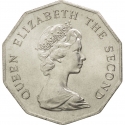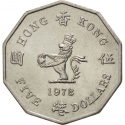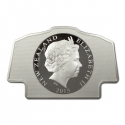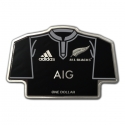You are about to finish your registration. Please check your mailbox (including spam folder). There should be a letter with a confirmation link. Check setting to make sure that your e-mail address is correct.
Send letter againDescription
A coin was minted to mark the noteworthy historical occasion of the 25th Anniversary of the Liberation of the Falkland Islands, which symbolizes the freedom of the Falkland Islanders from Argentine military control at the conclusion of the Falklands War on June 14, 1982.
The Falklands War, also known as the Guerra de las Malvinas, was a ten-week conflict in 1982 between Argentina and the United Kingdom. It centered on the Falkland Islands, South Georgia, and the South Sandwich Islands. Argentina's invasion of the Falkland Islands on April 2 and South Georgia on April 3 triggered the war. In response, the British government sent a naval task force to engage the Argentine Navy and Air Force and conducted an amphibious assault on the islands on April 5. The conflict lasted 74 days and concluded with an Argentine surrender on June 14, returning control of the islands to Britain. The war resulted in the loss of 649 Argentine military personnel, 255 British military personnel, and three Falkland Islanders.
Obverse
_Pence_50/Falklands_War_2007_01.09.2023_23.51-60.jpg)
|
Fourth crowned portrait of HM Queen Elizabeth II facing right, wearing the Girls of Great Britain and Ireland tiara. FALKLAND ISLANDS ELIZABETH II |
|---|---|
Reverse
_Pence_50/Falklands_War_2007_01.09.2023_23.51_01-60.jpg)
|
Depicts a magnified map of the Falkland Islands in the background with a back view of a ‘Yomper’ (a soldier who participates in a yomp, or long-distance march) in the centre. The marching figure is seen carrying a rucksack on his back with a Union Flag. 25TH ANNIVERSARY OF LIBERATION |
| Edge |
Characteristics
| Type | Commemorative Issue (Circulating) |
| Material | Cupronickel |
| Weight | 8 g |
| Diameter | 27.3 mm |
| Thickness | 1.78 mm |
| Shape |
|
| Sides | 7 |
| Alignment | Medal |
| Mint |
Pobjoy Mint (PM)
|
_Pence_50/Falklands_War_2007_01.09.2023_23.51.jpg)
_Pence_50/Falklands_War_2007_01.09.2023_23.51_01.jpg)




_Pounds_50/1998-2006_01.10.2024_14.38-125.jpg)
_Pounds_50/1998-2006_01.10.2024_14.38_01-125.jpg)